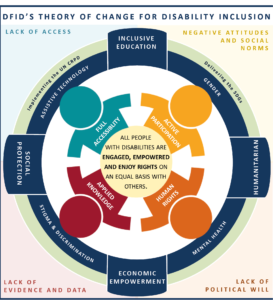Digital Currencies: Evolution, Benefits, and Sustainability Challenges
Authors:-Shi Ying Lim and Aditya phad
Introduction
Digital currency is any form of payment that exists in a purely electronic form. Digital currency is not physically tangible, like a dollar bill or a coin. It is accounted for and transferred using online systems, like the Internet and blockchain technology. There are mainly two types of digital currencies, the first type is cryptocurrencies which are one of the first digital currencies, they are decentralized digital currencies which operate on blockchain technology without a central authority (Grant, 2024). They rely on cryptographic techniques to process transactions and to control the creation of new units. Examples of cryptocurrencies are Bitcoin and Ethereum (Kaspersky, 2024). The next one is CBDC or central bank digital currencies; they are digital versions of a nation’s fiat currencies issued and regulated by the central bank of the respective country (McKinsey & Company, 2023). Examples include digital yuan of China (Bank of international settlements,2024) and E-rupee of India (press information bureau,2022).
These digital currencies have the potential to revolutionise global commerce by reducing costs, increasing transaction transparency and bypassing the traditional banking system which charges high transaction fees. Cross- border transactions also face the problems of high fees, delayed payment settlement times, and currency fluctuation risks which makes international trade difficult for developing nations. This is where digital currencies help in democratising access of global trade to backward nations and act as catalysts for financial inclusion .
This study first examines the evolution of digital currencies, their adoption trends and impact made by their adoption. Our main aim is to dive deeper and examine the critical question of long term economic, environmental and social sustainability-investigating the broader implications of the adoption of digital currencies. Next the study also highlights the potential challenges and hurdles that can occur while transitioning from traditional payment ecosystem to fully digital ecosystem, also exploring possible solutions to these hurdles and the future outlook on the topic. Offering deep insights regarding long-term sustainability. The research seeks to significantly contribute to broader discourse on how digital payments will change the future landscape of international trade.
A Comprehensive Review of Digital Currency Research: Challenges, Benefits, and Future Trends
Since Bitcoin’s introduction in 2009, digital currencies have evolved with the development of decentralized systems like blockchain. Central Bank Digital Currencies (CBDCs), including China’s Digital Yuan and India’s e-Rupee, represent a shift towards government-regulated digital currencies. These innovations signal a growing recognition of digital currencies’ potential to transform global financial systems, especially in international trade.
Focusing on the economic and regulatory aspects of digital currencies, earlier research, including Yermack (2013) and Catalini & Gans (2016), looked into how cryptocurrencies challenge traditional financial systems and lower transaction costs. More recent studies have turned their attention to the potential benefits of Central Bank Digital Currencies (CBDCs). Miedema and Hoekstra (2020) propose that CBDCs could help decrease cross-border transaction costs and improve financial inclusion in developing countries. Additional research by Gandal et al. (2018) suggests that digital currencies might simplify international trade by facilitating real-time, secure transactions. Meanwhile, Narula et al. (2020) examine how these currencies can help reduce risks associated with exchange rate fluctuations and lengthy settlement processes. Notably, Zhang et al. (2021) point out the economic and environmental hurdles of implementing CBDCs, especially concerning energy use and the necessary infrastructure.
Seeing how several areas such as the long-term sustainability of digital currencies, the security vulnerabilities of digital currencies and the regulatory challenges and development of global standards are underexplored, gaps in current research on this topic exist. Addressing such gaps will provide a clearer understanding of the broader implications of digital currency adoption for global commerce.
The Evolution of Digital Currencies: From Bitcoin to CBDCs
The advent of digital currencies marks a paradigm shift in the world of digital finance, this transformation has significantly impacted the world of commerce . The term cryptocurrency was first mentioned by Wei Dei in 1998 (Onyekwere, Ogwueleka, & Irhebhude, 2023), but it was in 2009 when the first cryptocurrency called bitcoin came into existence. Bitcoin was invented by an anonymous entity or group of people, this concept of bitcoin was thoroughly explained in the paper titled Bitcoin: A Peer-to-Peer Electronic Cash System published in October 2008 (Nakamoto, 2008), where the core concepts of bitcoin like blockchain, proof of work consensus mechanism and the fixed supply of 21 million coins were explained. With regards to the adoption worldwide, people around the world are investing in bitcoin and other cryptocurrencies like Ethereum (Buterin, 2014), Solana (Yakovenko, 2017) and Dogecoin (Markus & Palmer, 2013) etc, with big companies like MicroStrategy investing in bitcoin heavily. Moreover, countries like El Salvador have adopted bitcoin as their legal tender. Moreover countries like India and China are working on their pilot projects of CBDCs while countries like Nigeria, and the Bahamas have already launched their CBDC called E-naira and sand dollar respectively (Atlantic Council,2024).
Sustainability Challenges of Digital Currencies: Bitcoin and CBDCs
With the rise in its adoption, one might question the sustainability of this form of currency. The sustainability of digital currencies is a critical concern because of their potential to reshape financial systems, global markets, and societal interactions. This transformation will only be beneficial if it aligns with long-term environmental, economic, and social goals. While digital currencies hold promise for revolutionizing finance, their current implementation in the experimental and developing phase raises significant concerns about environmental, economic, and social sustainability.
Environmental Costs of Bitcoin’s Proof-of-Work System
From an environmental standpoint, digital currencies, particularly those utilizing energy-intensive proof-of-work systems, are significant energy consumers and heavily dependent on fossil fuels, leading to substantial greenhouse gas emissions. For example, the carbon footprint of Bitcoin is comparable to the burning of 38 billion tonnes of coal (Bessala,2024). Certain cryptocurrency networks use as much energy as small nations to maintain their blockchains, highlighting the immense energy demands of these currencies. To illustrate, Bitcoin is estimated to consume approximately 151 terawatt-hours of electricity annually, representing 0.59% of global electricity consumption, as reported by the Cambridge Bitcoin Electricity Consumption Index (CBECI). This figure is alarmingly higher than the total energy consumption of Ukraine in 2022 (Reiff,2024).
Economic Barriers to Widespread Adoption of CBDCs
Besides environmental concerns, digital currencies may not be economically sustainable due to high volatility, unequal wealth distribution and a lack of regulation. Digital currencies are notorious for their price volatility, making them unreliable as a stable store of value or medium of exchange. Another reason why digital currencies may widen inequality is the fact that people who mined and bought them early are the ones who possess most of them. As a result, they are wealthier, and wealth is clustered unequally. Besides, digital currencies pose many potential security issues with potential drawbacks such as fraud, market manipulation, and money laundering, which are dangers for financial systems. These concerns underscore the difficulties of widely adopting digital currencies, considering their considerable instability and related risks.
Social Challenges in Digital Currency Adoption
Lastly, digital currencies might face challenges in terms of social sustainability, as they could be associated with increased crime rates and accessibility problems. They are also quite complex, necessitating a higher level of digital literacy than more straightforward currency forms. As a result, individuals with lower incomes who have restricted access to education and digital resources may struggle to develop the technical skills necessary for the safe use of digital currencies. This exclusion of lower-income populations from digital currencies could exacerbate social inequalities, adding to the existing income disparities. Judging from the pace at which our entire human population fully grasps the idea of digital currencies, it may require a long time for knowledge gaps to be bridged. Moreover, the anonymous nature of nearly all digital currencies leads to numerous possibilities for its abuse, such as transactions with ransomware and the application of deep-fake technologies to perpetrated fraud, which in turn harms the community at large.
All these seem to point in the direction of digital currencies being largely unsustainable, possibly outweighing benefits from reducing inefficiencies in industries that adopt them.
Opportunities and Risks
Despite the promising and transformative potential of digital currencies in international trade, there are many hurdles and risks associated with the adoption of digital currencies they are discussed as follows:-
- Price volatility:- Cryptocurrency values can be highly volatile, affecting transaction value. But this problem can be solved by using stable-coins which are pegged to the value of fiat currency for example USDT tether (Tether,2024) or USDC (Circle,2024) and Dai (Maker Team,2024) are some examples of stable-coins which are pegged to the value of US dollar they can also be used for international transactions with lower fees by institutions and individuals without the need of the swift(society for world interbank financial telecommunication)network.
- Cybersecurity risks:- Cyber Security of digital currencies is a major concern among everyone because there are many threat actors like scammers and black hat hackers who use various techniques to steal cryptocurrencies from institutions as well as individuals. This risk can be mitigated by using good cybersecurity practices by individuals and institutions can hire ethical hackers to protect their digital currency assets.
- Regulatory hurdles:- regulation is one of the major concerns, as digital currencies often operate in the gray area. There is often regulatory uncertainty among countries, many countries embrace digital currencies while some countries impose strict restrictions or outright bans. This uncertainty creates complexity in business operations which discourages digital currency adoption. But this problem can be solved by using multilateral cooperation among nations and setting up a single regulatory authority.
Future of digital currencies in global trade
What will be crucial with continuing and expanding on this technology is to address current and future problems and obstacles it may create. The consequences of US sanctions on Russia spotlighted the vulnerability of digital currency to power politics. A fair and global digital currency system which is devoid of being monopolised is imperative in order to alleviate resultant apprehensions of US sanctions (Freidin,2024). We talked about the environment; 2024 marked the hottest year yet, successfully breaching the ceiling of 1.5C (Sinha, 2025). Gauging from the increased digitisation of the world, it will exacerbate its impact on the environment; which will be an irreversible debacle for our planet.
Addressing the social element, increasing social inequality, lack of education in many parts of the world, and vulnerability to online frauds will decide how effectively it can defuse in the deepest capillaries of societies. What is needed is to increase awareness and insert digital education in school awareness. Establishing cyber fraud help centres and enacting fierce penalties for the perpetrators. On a global level, countries need to leverage multiple methods to equally and neutrally conclude on the possible system to regulate digital currency.
Conclusion
In a nutshell, digital currencies have the potential to disrupt the world of international trade through more cost-effective and faster methods for all the parties concerned. When the world moves towards wide adoption of them, it is a possibility that they will get rid of inefficiencies of global trade. They still might not be practical for the future if we don’t solve the most dangerous problems of electricity use, regulations, and justice for all. The environmental, social, and economic challenges are “the elephant in the room,” that is, the ones referred to earlier, and steps and plans need to be taken towards addressing them. Looking into the future of digital currencies in global trade, the paramount issue here is for all the concerned parties to embrace an integrated approach that aligns digital currencies with ecological, economic, and social objectives. Decisions made by policymakers at all levels and the results of research are vital and necessary for the appropriate and timely integration of digital currencies into existing global trade networks. It is crucial to re-evaluate the potential risks and benefits of introducing new technologies in the fast-changing context of global trade to ensure the attainment of the highest goals and the smallest of side effects.
References and bibliography
Atlantic Council. (2024). CBDC tracker.https://www.atlanticcouncil.org/cbdctracker/
Bank for International Settlements. (2022, June 25). BIS Annual Economic Report 2022: Embracing the promise of innovation. [Press release]. https://www.bis.org/press/p220625.htm
Bessala, J. (2024, September). Can cryptocurrencies ever be green? The Conversation.https://theconversation.com/can-cryptocurrencies-ever-be-green-238359#:~:text=The%20environmental%20footprint%20of%20crypto&text=Bitcoin%27s%20carbon%20footprint%20was%20equivalent,people%20in%20sub%2DSaharan%20Africa
Buterin, V. (2014). Ethereum: A next-generation smart contract and decentralized application platform.https://ethereum.org/content/whitepaper/whitepaper-pdf/Ethereum_Whitepaper_-_Buterin_2014.pdf
Catalini, C., & Gans, J. S. (2016). Some Simple Economics of the Blockchain. MIT Sloan Research Paper, 5191-16. https://doi.org/10.2139/ssrn.2744751
Circle. (n.d.). MICA USDC whitepaper. https://www.circle.com/legal/mica-usdc-whitepaper
Freidin, E. (2024, January 12). BRICS and the pay challenge to the SWIFT network. The Lowy Institute. https://www.lowyinstitute.org/the-interpreter/brics-pay-challenge-swift-network
Gandal, N., Hamrick, J. T., Moore, T., & Oberman, T. (2018). The Bitcoin Op-Ed: A First Look at the Effect of Bitcoin on International Trade. Journal of Financial Economics, 130(2), 98-108. https://doi.org/10.1016/j.jfineco.2018.01.003
Grant, M. (2024, March 15). Digital money: What it is, how it works, types, and examples. Retrieved from https://www.investopedia.com/terms/d/digital-money.asp
Kaspersky. (2024). What is cryptocurrency? https://www.kaspersky.com/resource-center/definitions/what-is-cryptocurrency
Maker Team. (2024). The Dai stable-coin system. Retrieved from https://makerdao.com/whitepaper/DaiDec17WP.pdf
Markus, B., & Palmer, J. (2013). Dogecoin whitepaper. Retrieved from https://dogecoin.com/dogecoin.pdf
McKinsey & Company. (2023). What is central bank digital currency (CBDC)? Retrieved from https://www.mckinsey.com/featured-insights/mckinsey-explainers/what-is-central-bank-digital-currency-cbdc#/
Miedema, A., & Hoekstra, M. (2020). Central Bank Digital Currencies and Their Impact on Financial Inclusion. Economic Review, 16(4), 122-135.
Nakamoto, S. (2008). Bitcoin: A peer-to-peer electronic cash system. Retrieved from https://bitcoin.org/bitcoin.pdf
Narula, R., Jones, G., & Ling, F. (2020). Digital Currencies: Opportunities and Challenges in International Trade. International Business Review, 29(6), 1043-1057. https://doi.org/10.1016/j.ibusrev.2020.101758
Onyekwere, E., Ogwueleka, F. N., & Irhebhude, M. E. (2023). Adoption and sustainability of bitcoin and blockchain technology in Nigeria. International Journal of Information Technology, 15(6), 2793–2804. https://doi.org/10.1007/s41870-023-01336-1
Press Information Bureau. (2022). Central Bank Digital Currency (Digital Rupee). https://static.pib.gov.in/WriteReadData/specificdocs/documents/2022/dec/doc202212113920.pdf
Sinha, A. (2025, January 12). Earth records hottest year ever in 2024, breached a key threshold. The Indian Express. Retrieved from https://indianexpress.com/article/world/climate-change/earth-records-hottest-year-ever-in-2024-breached-a-key-threshold-9770781/
Tether. (2024). Tether whitepaper. Retrieved from https://assets.ctfassets.net/vyse88cgwfbl/5UWgHMvz071t2Cq5yTw5vi/c9798ea8db99311bf90ebe0810938b01/TetherWhitePaper.pdf
Yakovenko, A. (2017). Solana: A new architecture for a high-performance blockchain v0.8.13. Retrieved from https://solana.com/solana-whitepaper.pdf
Yermack, D. (2013). Is Bitcoin a real currency? An economic appraisal. Research in Economics, 67(4), 217-229. https://doi.org/10.1016/j.rie.2013.02.001
Zhang, K., Wang, Y., & Liang, X. (2021). Economic and Environmental Implications of Central Bank Digital Currencies. Journal of Digital Finance, 12(3), 232-247. https://doi.org/10.1007/s42490-021-00084-w





